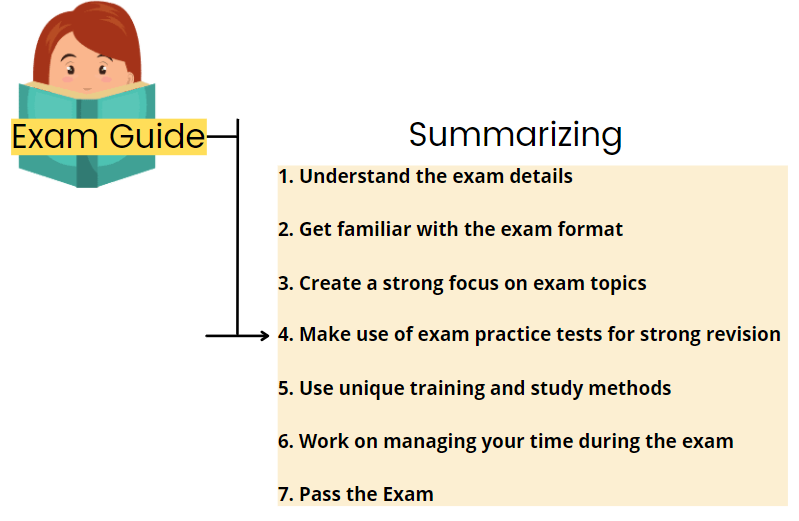PRINCE2 Certification Exam Strategy: Approaches for Success - Course Monster Blog

The demand for project managers proficient in implementing effective agile methodologies within dynamic environments and cross-functional teams is experiencing a significant surge. In response to this trend, numerous esteemed organizations and enterprises are augmenting their project management workforce by hiring additional skilled professionals. Amongst leading organizations, the PRINCE2 Agile Practitioner certification stands out as the preferred choice for acquiring agile competencies and capabilities.
This certification encompasses the fusion of agile principles with the world’s most widely adopted project management methodology. By attaining the PRINCE2 Agile Practitioner certification, individuals gain comprehensive knowledge of integrating structure, control, and agile methodologies, techniques, and approaches, while ensuring alignment with user demands. Consequently, possessing this certification facilitates the acquisition of advanced agile and project management skills, setting individuals on a path toward a promising and prosperous future.
However, a pivotal question arises: How does one embark on the preparation journey for the PRINCE2 Agile® Practitioner exam? In this article, we will delve into essential areas, topics, formats, and unique study methods to equip you with familiarity with the concepts and enhance your chances of successfully passing the exam.
PRINCE2 Agile Certification Practitioner Exam: Glossary
Below are some key terms and concepts associated with the PRINCE2 Agile® Practitioner exam:
- PRINCE2: A comprehensive approach to project management that offers a structured framework for effectively managing projects, encompassing fundamental principles, thematic elements, and well-defined processes.
- Agile: An iterative project management approach that places emphasis on flexibility, adaptability, and collaborative teamwork.
- Scrum: A software development Agile methodology that prioritizes the delivery of functional software through short iterative cycles, commonly referred to as sprints.
- Kanban: A workflow-centric Agile methodology that concentrates on visualizing and effectively managing the flow of tasks, controlling work in progress, and optimizing overall work efficiency.
- Lean: A philosophy and methodology aimed at enhancing efficiency and minimizing wastage in various processes, including the domain of project management.
- Sprint: In Scrum projects, a brief iteration, usually spanning two to four weeks, wherein a subset of features or requirements are developed and delivered.
- Daily Scrum: In Scrum projects, a brief daily meeting where team members gather to discuss progress, challenges, and daily plans.
- User Story: A concise and informal description of a feature or requirement, presented from the user or customer’s perspective.
- Product Backlog: A prioritized inventory of features or requirements for a product or project, typically managed and updated by the product owner.
- Retrospective: A session conducted at the conclusion of a Sprint, wherein the team reflects upon their performance and identifies areas for improvement.
These examples represent only a fraction of the numerous terms and concepts you will come across in the PRINCE2 Agile Practitioner exam. Familiarizing yourself with these, along with other pivotal concepts, is crucial for developing a robust comprehension of project management methodologies and their practical implementation within Agile environments.
Want to know more about PRINCE2? Visit our course now.
How about Agile? We have here covered for you as well.
PRINCE2 Agile Certification Practitioner Preparation Guide
The PRINCE2 Agile Practitioner certification supports professionals in successfully delivering agile projects by combining PRINCE2 management controls with a wide range of agile delivery methodologies and frameworks. This credential equips you with the knowledge and skills to effectively blend agile methods, techniques, and approaches with structured governance and control. By attaining the Practitioner level, you will be able to apply the acquired knowledge from the Foundation level to real-world management scenarios in the workplace.
This certification will support you in the following areas:
- An in-depth comprehension of the governance requirements specific to PRINCE2.
- Gaining knowledge and expertise in various agile concepts and methodologies such as Scrum, Kanban, Lean Start-up, and Cynefin.
- Analyzing and understanding the relationship between PRINCE2 and agile working methods.
Step 1: The target audience for the exam
The PRINCE2 Agile Practitioner exam caters to project managers and other essential individuals who possess the capabilities and expertise to integrate project management and product delivery effectively. Nevertheless, it is also advantageous for individuals with governance responsibilities in projects utilizing agile delivery methodologies, as well as those involved in program and project support roles, to be familiar with the agile concepts defined in PRINCE2 Agile. Furthermore, project managers and professionals from non-project management backgrounds who aspire to contribute value to their organizations and advance their careers will find it indispensable.
Step 2: PRINCE2 Agile Practitioner: Exam Pre-requisites
- To be eligible for the PRINCE2 Agile Practitioner exam, it is a prerequisite to hold either the PRINCE2 Agile Foundation certification or any other PRINCE2 certification.
- Furthermore, the Project Management Professional® (PMP), Certified Associate in Project Management® (CAPM), and IMPA Levels A, B, C, and D® (Certified Projects Director) are among the recognized credentials in addition to PRINCE2 Agile Foundation or any other PRINCE2 certification.
- The PRINCE2 Agile Practitioner credentials remain valid for a period of three years. To maintain their accreditation, practitioners have the option to either retake the exam or accumulate Continuing Professional Development (CPD) points through our online subscription platform, My PRINCE2.
Step 3: Examination format
The PRINCE2 Agile® Practitioner certification exam follows an ‘open book’ format, allowing you to refer to the PRINCE2 Agile guide throughout the duration of the exam. You will be required to answer a total of 50 questions within a time limit of 2 hours and 30 minutes. The exam includes scenario-based questions that are based on a case study. To assist with answering the questions, the Scenario Booklet provides the scenario and four sets of additional information for each question component. The Question Booklet contains five sets of multiple-choice questions (MCQs) that assess specific learning objectives covered in your course of study.
To pass the exam, a minimum score of 60% (30 points) or higher is required. The exam is available in English, German, Polish, and Dutch. The cost of the PRINCE2 Agile Practitioner Exam is £405.
Things to consider while booking an exam
- Before scheduling a test that has prerequisites, ensure you possess verified proof of completion.
- This can be in the form of a certificate or a letter from AXELOS or the former Examination Institute, confirming your current certification.
- If the necessary requirement is not received by PeopleCert, your exam results will be delayed.
- In the event that you are unable to provide the appropriate precondition, you must fulfill the prerequisite before the result of the higher-level test can be released.
Step 4: Understanding the PRINCE2 Agile Practitioner Exam Topics
Understanding the exam topics and sections plays a crucial role in preparing for the Prince2 Agile Practitioner Syllabus. By familiarizing ourselves with the following key aspects, we can enhance our exam readiness:
- Understanding the fundamental concepts of popular agile methodologies
- Grasping the purpose and context of combining PRINCE2® with agile approaches
- Applying and assessing the focus areas within an agile project setting
- Balancing and adjusting the six aspects of a project within an agile environment
- Implementing the PRINCE2 principles, themes, processes, and management products in an agile project context
Step 5: AXELOS: Training Methods
Accredited training organizations offer PRINCE2 Agile training courses. You can utilize the training search feature to find a suitable training provider. However, for the PRINCE2 Agile® Practitioner exam, you will receive the latest and most pertinent insights into agile project management methodologies. This comprehensive coverage includes a diverse range of agile concepts such as SCRUM, Kanban, and Lean Startup.
Step 6: MyAxelos: Connecting with Community
MyAxelos has been designed to support your professional growth and advancement in your current role. By subscribing to the online content, you will gain access to valuable skills and information necessary for implementing best practices and achieving success in your career. This subscription offers the following benefits:
- Stand out from your industry competitors by utilizing a CPD toolkit and digital badges.
- Stay updated on industry developments through best-practice publications, studies, and white papers.
- Benefit from exam tools to enhance your chances of success and utilize templates to implement your newfound knowledge.
- Gain access to an exclusive community of experts who share similar interests.
Step 7: Using Practice tests for PRINCE2 Agile Certification Practitioner
Using the Prince2 Agile Practitioner Practice Test is the most effective method to assess your readiness for the exam. By evaluating your performance, you can identify areas of strength and weakness. Additionally, practicing answering questions will enhance your time management skills. It is crucial to obtain high-quality practice tests available online to obtain a comprehensive evaluation of your performance, pinpointing both your strengths and areas for improvement.
Step 8: Things to focus on for the exam
1. Creating a study map
Acquiring knowledge in a new subject necessitates active engagement with the material. When you engage with the different components, your mind is stimulated to process the information and establish connections. Creating a study map that includes all the pertinent details and topics is an effective approach to facilitate this process.
By following a step-by-step procedure outlined in the study map, you can establish a strong foundation and begin your learning journey with greater clarity and organization.
2. Working on time management skills
The duration of the exam is 2.3 hours, allowing for 5 minutes to read the scenario booklet. During the exam, it is advisable to underline or highlight key points to ensure their visibility for later reference when answering the questions. This practice can be beneficial for effective information retrieval. You will have a total of 145 minutes remaining to complete the exam, and employing time management strategies can assist in optimizing your performance.
- Allocate two minutes for each question and clearly mark your answer on the response page.
- Proceed to the next question after answering one.
- This approach will take approximately 136 minutes, leaving you with 9 minutes to review your answer sheet for accuracy, considering the 5 minutes spent reading the scenario.
- Ensure that you have responded to all the questions.
- Keep in mind that no points are deducted for incorrect answers, so relying on your intuition can be a good strategy.

Here at CourseMonster, we know how hard it may be to find the right time and funds for training. We provide effective training programs that enable you to select the training option that best meets the demands of your company.
For more information, please get in touch with one of our course advisers today or contact us at training@coursemonster.com




Comments ()